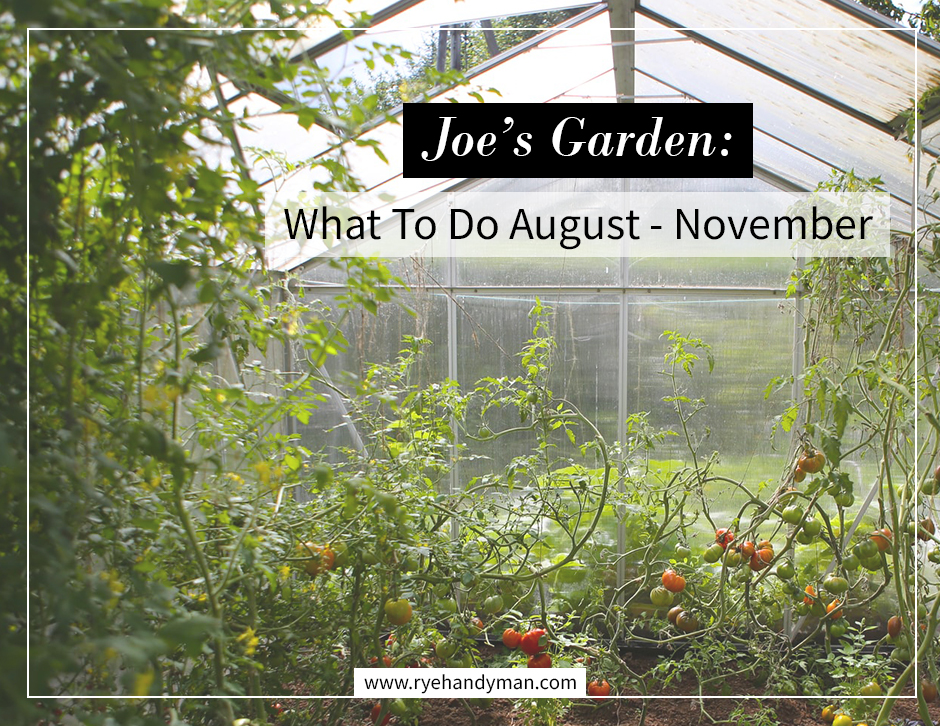
Joe’s Garden: What To Do August – November

Summer has finally arrived, allowing us to enjoy more time out in our garden watching the blooms and soaking in the sunshine, but there’s still plenty to do to make sure it stays in great condition all year round. Take some time over the next few months with our (still inexhaustive!) list of things to do so you can enjoy your space whatever the season.
August
– Sow hardy crops such as spinach, parsnips, winter cabbage and carrots etc
– Protect any autumn fruits such as blackberries with netting or fleece
– Harvest tomatoes, chillies and other fruit and veg regularly to encourage more growth
– Move delicate flowers in pots into the greenhouse or under cover on particularly bright days to prevent sun-scorching
– Plant out autumn and winter bulbs such as narcissus, nerines, cyclamen and crocus
– Treat any pests and diseases you find
– Deadhead border plants
– Prune wisteria by reducing the longer shoots to approx. 20cm
– If you intend on going away on holiday, make sure you have a watering or matting system set up

September
– Put a net over ponds to stop too many leaves and detritus falling in
– Clean out water butts and gutters to make sure they’re free-flowing when it rains
– If you moved houseplants outside over the summer, bring them back indoors
– Plant/sow hard annuals and other spring/summer plants
– Collect seeds from flowers you want to replant next year
– Plant spring bulbs
– Keep hedges trimmed – their growth will slow in the colder months and will look tidier for longer
– Pick ripe fruits from fruit trees to prevent them being taken by birds or insects, or being blown off in wind
– Prune fruit trees to ensure future blossom
– Maintain greenhouses – ensure plenty of light can get through in the darker days, install a heater, check ventilation
– Cover tender plants if there are early frosts

October
– Plant evergreens whilst soil is still warm
– Clear away old crops and vegetables so there is less risk of pests and diseases spreading
– Bring tropical potted plants inside
– Change the frequency of your watering routine – the soil will retain more in colder months so water less
– Rake fallen leaves regularly and bag up to allow them rot down
– If you have a log burner, build up a log pile outside – this is also ideal for wildlife and insects to shelter in over winter
– Waterproof your garden outbuildings (if they aren’t already) to allow you to store your tools and garden furniture

November
– Plant tulip bulbs ready for spring
– Clear borders of faded climbers and perennials
– Protect any remaining or winter vegetables with netting
– Insulate your greenhouse with bubble wrap
– Check plants in your greenhouse regularly for pests etc
– Always check bonfires for evidence of wildlife before setting alight. Hedgehogs and other small creatures love to shelter in them
– Repair any fences and trelliswork whilst they’re free of climbers
– Whenever you need to mow the lawn, raise the blades higher than they’ve been over summer
– To prevent damage from frost and ice, remove pond and water feature pumps




